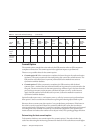
TABLE3–2 EJB Cache andPool Settings (Continued)
CacheSettings PoolSettings
Typeof
Bean
cache-
resize-
quantity
max-cache-
size
cache-
idle-
timeout-
in-
seconds
removal-
timeout-in-
seconds
victim-
selection-
policy
refresh-
period-
in-
seconds
steady-
pool-size
pool-
resize-
quantity
max-
pool-
size
pool-idle-
timeout-in-
seconds
Entity XXXXX XXXX
Entity
Read-
only
XXXXXXXXXX
Message
Driven
Bean
XXX
Commit Option
The commit option controls the action taken by the EJB container when an EJB component
completes a transaction. The commit option has a signicant impact on performance.
There are two possible values for the commit option:
■
Commit option B: When a transaction completes, the bean is kept in the cache and retains
its identity. The next invocation for the same primary key can use the cached instance. The
EJB container will call the bean’s ejbLoad() method before the method invocation to
synchronize with the database.
■
Commit option C: When a transaction completes, the EJB container calls the bean’s
ejbPassivate() method, the bean is disassociated from its primary key and returned to the
free pool. The next invocation for the same primary key will have to get a free bean from the
pool, set the PrimaryKey on this instance, and then call ejbActivate() on the instance.
Again, the EJB container will call the bean’s ejbLoad() before the method invocation to
synchronize with the database.
Option B avoids ejbAcivate() and ejbPassivate() calls. So, in most cases it performs better
than option C since it avoids some overhead in acquiring and releasing objects back to pool.
However, there are some cases where option C can provide better performance. If the beans in
the cache are rarely reused and if beans are constantly added to the cache, then it makes no
sense to cache beans. With option C is used, the container puts beans back into the pool (instead
of caching them) after method invocation or on transaction completion. This option reuses
instances better and reduces the number of live objects in the JVM, speeding garbage collection.
Determining the best commit option
To determine whether to use commit option B or commit option C, rst take a look at the
cache-hits value using the monitoring command for the bean. If the cache hits are much higher
Refreshperiod
Chapter3 • Tuningthe EnterpriseServer 57


















